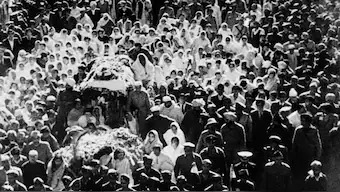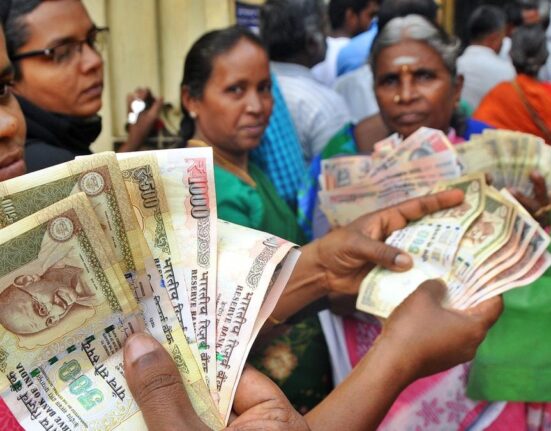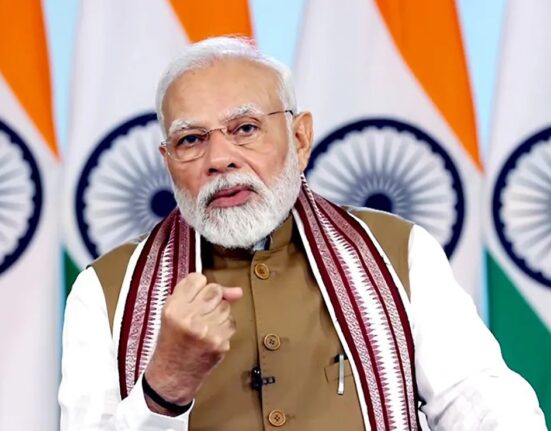परिचय
Mahatma Gandhi was assassinated on 30 January 1948 at Birla House (now Gandhi Smriti) in New Delhi, when Nathuram Vinayak Godse fired three shots at point-blank range as Gandhi walked to his evening prayer meeting; he was 78 years old at the time. The killing occurred a little after 5 p.m. in the prayer-ground garden of the residence where Gandhi had been living since September 1947.

Background: Context and prior attempts
- In the months after Independence and Partition, Gandhi focused on peace, communal reconciliation, and relief for refugees in Delhi, holding multi-faith evening prayers at Birla House that drew large crowds.
- Ten days earlier, on 20 January 1948, a failed attempt involving a bomb and coordinated plot had targeted Gandhi at Birla House, presaging the successful attack that followed.
The assassination: 30 January 1948
- Around 5:15 p.m., Gandhi left his room supported by his grandnieces and walked toward the prayer dais on the rear lawn when Godse stepped from the crowd, greeted him, and fired three shots from a small-caliber pistol into Gandhi’s abdomen and chest at close range.
- Gandhi fell and was carried back into Birla House; accounts differ on whether he died instantly or shortly thereafter in his room, but his death was announced within minutes, and his last words are widely reported as “He Ram” (“Oh God”), though this remains debated.
- Godse was seized on the spot; among those who apprehended him was Herbert Reiner Jr., a U.S. vice-consul present at the prayers, before Godse was handed to police.
Site and memorial
- The location of the assassination is the prayer ground of the former Birla House at 5, Tees January Marg—preserved today as Gandhi Smriti, a national memorial that maintains Gandhi’s room and the prayer site where he fell on 30 January 1948.
- Gandhi had lived at Birla House from 9 September 1947 until the day of his death, marking the site as the place of his final 144 days.
Motive and conspirators
- Nathuram Godse, associated with the Hindu Mahasabha and with a background of involvement with the RSS, believed Gandhi was overly conciliatory to Muslims during and after Partition and sought to eliminate what he saw as a political obstacle.
- The conspiracy involved multiple collaborators, including Narayan Apte and others later charged; an earlier plot on 20 January included an explosive attempt that failed.
Arrest, trial, and sentences
- A special court convened at Delhi’s Red Fort began the Gandhi murder trial on 27 May 1948, hearing extensive prosecution evidence over eight months.
- Judge Atma Charan convicted several accused; Nathuram Godse and Narayan Apte were sentenced to death, while others received life imprisonment or lesser terms, and V.D. Savarkar was acquitted for lack of corroborative evidence beyond an approver’s testimony.
- Godse and Apte were executed at Ambala Jail on 15 November 1949 after clemency pleas—including by Gandhi’s sons Manilal and Ramdas—were declined by Prime Minister Nehru, Deputy Prime Minister Patel, and Governor-General Rajagopalachari.
Immediate aftermath
- Prime Minister Jawaharlal Nehru addressed the nation by radio, declaring, “The light has gone out of our lives,” capturing the public shock and grief that swept India and the world.
- Vast crowds gathered overnight at Birla House; Gandhi’s body was publicly viewed, mourners recited scriptures, and arrangements for the funeral proceeded amid a profound national outpouring.
Significance and legacy
- Gandhi’s murder extinguished the leading moral voice of India’s freedom movement at a fragile moment of nation-building and communal tension, deepening the state’s resolve against extremist violence and reshaping the trajectory of Indian politics.
- The preservation of the site as Gandhi Smriti and the annual national observance of his death anniversary reflect enduring commemoration and reflection on nonviolence, pluralism, and constitutional values he championed.
Key figures
- Mahatma Gandhi: Leader of India’s nonviolent freedom struggle; assassinated at age 78 during evening prayers at Birla House.
- Nathuram Vinayak Godse: Assassin; associated with Hindu Mahasabha and formerly with RSS; convicted and executed in 1949.
- Narayan Apte: Co-conspirator; convicted and executed alongside Godse.
- Herbert Reiner Jr.: U.S. vice-consul who helped subdue Godse at the scene.
Key dates and facts
- 20 January 1948: Failed assassination attempt at Birla House involving an explosive device.
- 30 January 1948 (~5:15 p.m.): Gandhi shot three times at Birla House prayer ground; dies shortly thereafter.
- 27 May 1948–10 February 1949: Trial period culminating in convictions and death sentences for Godse and Apte.
- 15 November 1949: Execution of Godse and Apte at Ambala Jail.
Interesting facts
- Gandhi’s final words are widely recorded as “He Ram,” though eyewitness accounts vary; the phrase remains part of national memory and debate.
- The Birla House address, Tees (30) January Marg, literally memorializes the date of his assassination in New Delhi’s toponymy and as the present Gandhi Smriti museum.
- Nehru’s radio address announcing Gandhi’s death is among the most quoted broadcasts in Indian history, symbolizing the country’s collective grief and resolve.

निष्कर्ष
On 30 January 1948, as Gandhi walked to lead his evening prayers at Birla House, Nathuram Godse stepped from the crowd and fired three shots that killed the Mahatma, ending a life devoted to nonviolence and justice and plunging a nascent nation into mourning; the swift capture and later conviction of the conspirators, and the preservation of the site as Gandhi Smriti, keep alive both the tragedy and the transformative ideals Gandhi embodied.








इस बारे में प्रतिक्रिया दें